Blueprint for a Tactical Superhuman Robot Powered by AI
Ever wonder how to build a Terminator? Yeah, neither had I until today.
OK, so this morning, I woke up at 6 am, made my oatmeal, fruit, and coffee, and turned on the T.V. “Terminator Dark Fate” was on, and I hadn’t seen it, so I decided to watch it. As I watched, I thought to myself when these movies were first made, they were thought to be “total sci-fi” Today, the early Terminators seem buildable. Some of you are thinking, what’s all this have to do with a “Blueprint for Building a Terminator”? I’m getting to that.
As many of you know, my career is in digital marketing and SEO, and we deal with AI daily; it is truly a remarkable tool. Anyways, while cutting the grass and fixing my fence, it dawned on it would be a fun and educational exercise to see if AI could provide me a plan to build a Terminator”ish” robot.
Below is the outcome of that exercise; if you are anything like me, you’ll be pretty impressed with the plan my AI tool came up with in about 45 minutes of refining questions.
Table of contents
- Blueprint for a Tactical Superhuman Robot Powered by AI
- Building a Terminator Introduction
- Defining the Purpose
- Designing the Robot’s Physical Structure
- Developing the Robot’s Sensory System
- Implementing an AI Brain
- Integrating Hardware and Software
- Testing and Refinement
- Ethical and Safety Considerations
- AI-Powered Tactical Superhuman Robot Capabilities and Limitations
- Scenarios Were The Tactical Superhuman Robot Would Excel
- Cost and Timeline to Build a Terminator
- What Aspects of a Terminator Can Technology Not Reach Yet
- How To Build a Terminator Conclusion
- How to Build a Terminator FAQs
Building a Terminator Introduction

In science fiction, the idea of a lifelike superhuman robot with an AI brain capable of tactical prowess has captured our imaginations for decades. However, recent robotics and artificial intelligence advancements have brought us closer to turning this dream into reality. This blog post will explore the intricacies of constructing such a remarkable creation,
exploring the required steps, materials, and costs. Brace yourself for an enlightening journey into the future of AI.
Author’s Note: The following blog post outlines the conceptual process of constructing a lifelike superhuman robot with an AI brain focused on tactical applications. While the ideas presented here are rooted in existing technological advancements, it’s important to note that realizing such a project may be beyond our capabilities.
Defining the Purpose
To embark on this grand undertaking, a clear purpose must be established. The envisioned superhuman robot will be designed to handle complex tactical situations, combining analytical intelligence, physical strength, and adaptability. Its primary objective will be to efficiently enhance personal protection and address imminent threats.

Defining the purpose of a tactical superhuman robot powered by AI is the crucial first step in constructing such a remarkable machine. This section will delve into the key considerations and steps in effectively defining the purpose.
Assessing Real-World Applications
Begin by exploring the specific domains in which the robot will operate. Evaluate the potential applications, such as defense, law enforcement, or hazardous environment exploration. Consider these domains’ tactical challenges and how the robot can address them efficiently.
Identifying Key Objectives
Determine the primary objectives of the robot. Will it be focused on reconnaissance, combat, or search and rescue operations? Clarify the specific tasks it needs to perform and the desired outcomes. This will help guide the development process and ensure the robot’s capabilities align with its intended purpose.

Understanding Operational Environments
Analyze the environments in which the robot will operate. Identify the challenges, physical constraints, and potential threats it may encounter. Whether it’s urban warfare, disaster zones, or remote areas, comprehending the operational environments is crucial in designing a robot that can adapt and thrive in these conditions.
Collaborating with End Users

Engage with end users who will deploy and interact with the tactical superhuman robot. Seek input from military personnel, law enforcement agencies, or other relevant stakeholders. Understand their specific needs, challenges, and desired features. This collaboration ensures that the robot’s purpose aligns with the requirements of those who will rely on its capabilities.
Long-Term Vision
Look beyond immediate objectives and consider the long-term vision for the tactical superhuman robot. How can it evolve and adapt as technology advances? Consider scalability, modularity, and the potential for future upgrades or modifications. This forward-thinking approach will help ensure the robot remains relevant and effective in the face of changing needs and emerging technologies.
Summarize Findings and Outline Purpose
By following these steps, you can define the purpose of a tactical superhuman robot powered by AI with clarity and precision. This critical foundation will shape the subsequent stages of development, guiding the design, capabilities, and decision-making algorithms that will enable the robot to fulfill its intended purpose most efficiently and effectively possible.

Designing the Robot’s Physical Structure
Collaborating with leading mechanical engineers and robotics experts, the first step is crafting a physical structure that emulates the human form while maximizing functionality. Lightweight and sturdy materials, such as advanced composites and 3D-printed components, will be utilized. The design will feature agile joints, robust actuators, and an impressive range of motion, facilitating seamless navigation in challenging environments.

The physical structure of a tactical superhuman robot powered by AI is vital in determining its capabilities, maneuverability, and overall effectiveness in tactical operations. This section explores the key considerations and steps in designing a robust and efficient physical structure for such a remarkable machine.
Humanoid vs. Non-Humanoid Design
One of the first decisions to make is whether to opt for a humanoid or non-humanoid design. While a humanoid structure can provide versatility in interacting with human-centric environments and tasks, non-humanoid designs may offer advantages in specific scenarios, such as rugged terrains or specialized missions. Consider the specific operational requirements and choose a design that optimizes functionality and performance.

Materials and Construction
Selecting suitable materials for the robot’s construction is crucial. Consider factors such as weight, durability, resistance to extreme conditions, and the ability to withstand impacts or ballistic threats. Advanced alloys, composite materials, or specialized polymers may be employed to balance strength, weight, and flexibility.
Mobility and Locomotion
The robot’s mobility capabilities greatly impact its agility and adaptability in dynamic environments. Depending on the operational requirements, evaluate various locomotion mechanisms, such as legs, wheels, or tracks. For example, legs may enable better maneuverability in complex terrains, while wheels or tracks may provide faster mobility on even surfaces. Consider the trade-offs between stability, speed, and energy efficiency.
Sensor Integration
To effectively perceive and interact with the surrounding environment, incorporate a range of sensors into the robot’s physical structure. These may include cameras, lidar, radar, and infrared sensors. The sensors should be strategically positioned to provide maximum coverage and accurate data acquisition for navigation, object
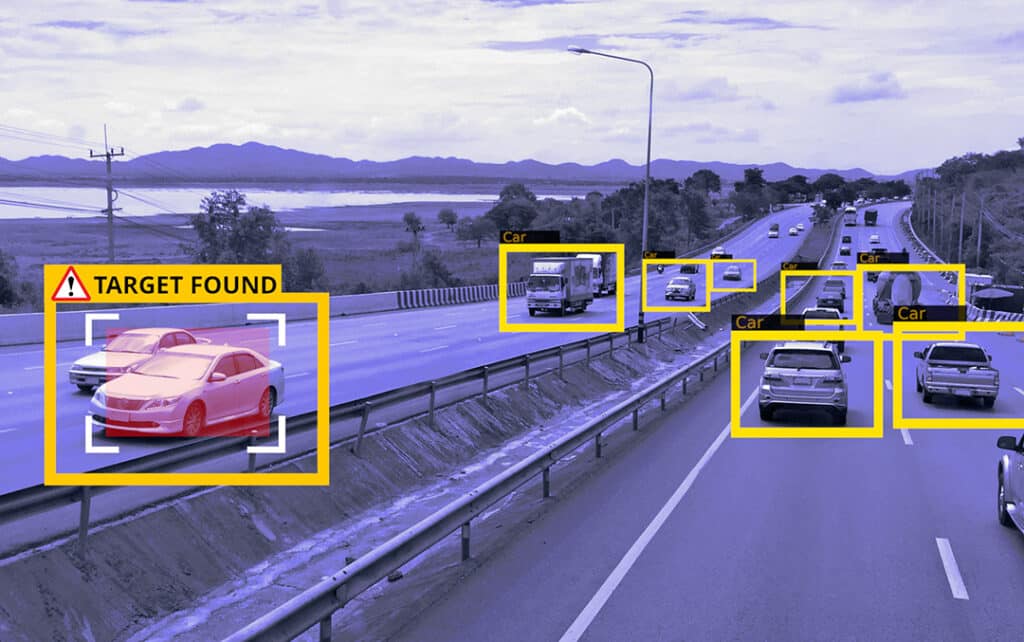
recognition, threat detection, and situational awareness.
Power and Energy Systems
The physical design must accommodate the power and energy requirements of the robot’s AI brain and associated systems. Optimize power distribution, battery capacity, and charging mechanisms to ensure sufficient operational endurance. Consider energy-efficient components, renewable energy sources, or even power regeneration from movement to enhance the robot’s autonomy and reduce logistical challenges.
Modularity and Adaptability
Design the robot’s physical structure with modularity and adaptability in mind. Incorporate interchangeable or upgradable components to facilitate maintenance, repairs, or future enhancements. This modularity allows for quickly replacing damaged parts, integrating new technologies, or customization based on evolving tactical needs.
Ergonomics and User Interface
While the primary focus is on the robot’s external structure, it is essential to consider the ergonomics of the user interface. Design intuitive controls, interfaces, and feedback mechanisms to ensure seamless interaction between the human operator and the robot. Prioritize user experience, ease of use, and ergonomics to enable efficient command and control operations.
Summary of Designing the Robot’s Physical Structure

By carefully considering these factors, you can design a physical structure for a tactical superhuman robot that optimizes performance, functionality, and adaptability. Integrating advanced materials, mobility mechanisms, sensors, power systems, and user-friendly interfaces will empower the robot to fulfill its tactical objectives with precision and effectiveness.
Present Day Technologies that could do the previously outlined Physical Structure.
- Advanced Materials
- Mobility and Locomotion
- Sensor Integration
- Power and Energy Systems
- Modularity and Adaptability
- Ergonomics and User Interface
Developing the Robot’s Sensory System
The robot’s sensory system will provide a comprehensive understanding of its surroundings. High-resolution cameras, cutting-edge lidar technology, advanced microphones, and touch sensors will grant the robot unparalleled perceptual capabilities. The AI brain will gain real-time situational awareness through extensive data processing, enabling swift and intelligent decision-making.
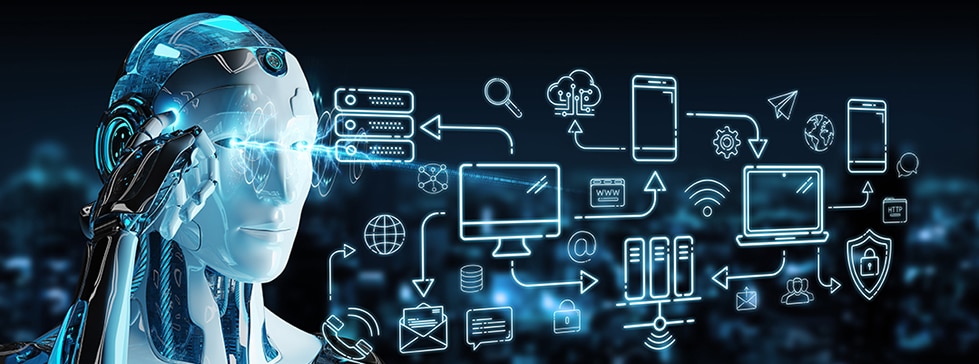
The sensory system of a tactical superhuman robot powered by AI is the gateway through which it perceives and interacts with its environment. This section will explore the key considerations and steps involved in developing a robust and advanced sensory system.
Sensor Selection
Choosing the right sensors is critical for the robot to gather accurate and comprehensive data about its surroundings. Consider a combination of vision-based sensors, such as cameras and depth sensors, to enable visual perception. Additionally, incorporate other sensors like lidar, radar, and infrared to enhance the robot’s ability to detect objects, measure distances, and perceive thermal signatures.
Sensor Fusion
To build a comprehensive understanding of the environment, implement sensor fusion techniques. Sensor fusion combines data from multiple sensors to obtain a more accurate and reliable representation of the surroundings. By integrating data from various sensors, the robot can leverage the strengths of each sensor, compensate for limitations, and make informed decisions.
Perception Algorithms
Develop sophisticated perception algorithms that enable the robot to interpret sensor data effectively. These algorithms should include computer vision techniques, machine learning models, and deep neural networks to analyze visual information, recognize objects, detect anomalies, and identify potential threats.
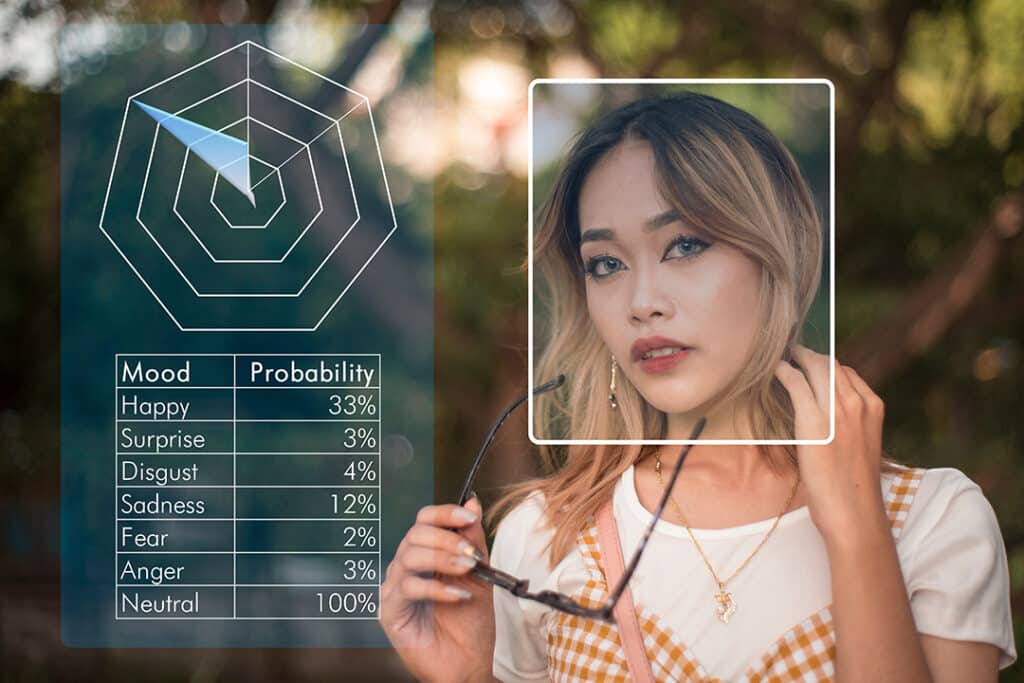
Robust perception algorithms are crucial for real-time decision-making and situational awareness.
Object Recognition and Tracking
Implement advanced object recognition and tracking capabilities to enable the robot to identify and track specific objects or individuals of interest. Utilize machine learning algorithms, such as convolutional neural networks, to classify objects and track their movements over time. This functionality enhances the robot’s ability to detect targets, navigate complex environments, and execute tactical maneuvers effectively.
Environmental Mapping
Enable the robot to create detailed maps of its operational environment. Utilize simultaneous localization and mapping (SLAM) algorithms to generate accurate representations of the surroundings, including obstacles, terrain features, and potential points of interest. These maps are a foundation for navigation, path planning, and tactical decision-making.
Human-Robot Interaction

Design the sensory system to facilitate seamless human-robot interaction. Implement gesture recognition, voice commands, or natural language processing capabilities to enable intuitive communication between the robot and human operators. The ability to interpret
and responding to human cues enhances collaboration, command execution, and operational efficiency.
Feedback Mechanisms
Incorporate feedback mechanisms that provide real-time information to the human operator. Visual displays, haptic feedback, or auditory cues can relay critical information about the robot’s actions, status, and detected threats. Effective feedback mechanisms foster better situational awareness, enabling operators to make informed decisions and provide necessary commands to the robot.
Integrating Advanced Sensors
By carefully developing the sensory system of a tactical superhuman robot, you empower it to perceive, analyze, and respond to its environment with remarkable accuracy and efficiency. Integrating advanced sensors, perception algorithms, object recognition, mapping, and human-robot interaction capabilities forms the foundation for the robot’s tactical prowess and mission success.
Present Day Technologies that could do the previously outlined sensory demands.
- Sensor Selection
- Sensor Fusion
- Perception Algorithms
- Object Recognition and Tracking
- Environmental Mapping
- Human-Robot Interaction
- Feedback Mechanisms
- Haptic feedback devices
- Auditory cues or synthesized voice output
Implementing an AI Brain
The heart of the superhuman robot lies in its AI brain, which will simulate human-level intelligence and consciousness. Leveraging state-of-the-art deep learning techniques and neural networks, the AI brain will be trained on vast amounts of data, encompassing various tactical scenarios, human behavior patterns, and combat strategies. Reinforcement learning algorithms will refine their decision-making abilities over time.

The AI brain is the core component that empowers a tactical superhuman robot with intelligent decision-making, learning capabilities, and adaptability. This section will explore the key considerations and steps in implementing an AI brain.
AI Framework Selection
Choosing the right AI framework is crucial for developing the robot’s intelligence. Consider frameworks such as TensorFlow, PyTorch, or Caffe that provide powerful tools and libraries for training and deploying deep learning models. Select a framework that suits the specific requirements of the robot’s cognitive capabilities.
Data Acquisition and Preparation
A vast amount of relevant data is essential to train the AI brain. Collect and curate diverse datasets encompassing tactical scenarios, threat scenarios, environmental conditions, and human interactions. Preprocess the data to ensure it is labeled, annotated, and representative of the real-world situations the robot will encounter.
Machine Learning Model Development

Develop machine learning models, such as convolutional neural networks (CNNs) or recurrent neural networks (RNNs), to enable the robot to learn from the data and make intelligent decisions. Train the models using the collected and preprocessed data, fine-tuning the architecture and hyperparameters to optimize performance.
Real-Time Inference
Implement mechanisms for real-time inference, allowing the robot to process sensory inputs, make predictions, and respond quickly to changing situations. Efficient hardware acceleration, such as GPUs or specialized AI chips, can speed up the inference process and enable rapid decision-making.
Reinforcement Learning
Consider integrating reinforcement learning techniques to enable the robot to learn and improve its actions based on feedback and rewards. Reinforcement learning allows the robot to explore its environment, learn from trial and error, and optimize its behavior over time, enhancing its tactical capabilities.
Continuous Learning and Adaptability
Design the AI brain to support continuous learning and adaptability. Implement mechanisms that enable the robot to update its knowledge base, refine its models, and incorporate new information and strategies. This ensures the robot remains up-to-date with evolving tactical scenarios and can adapt its behavior accordingly.
Ethical Considerations
Take ethical considerations into account when developing the AI brain. Define ethical guidelines and constraints to ensure the robot’s actions align with legal, moral, and societal norms. Implement safety measures, fail-safes, and transparency mechanisms to prevent unintended consequences and promote trust in the robot’s decision-making.
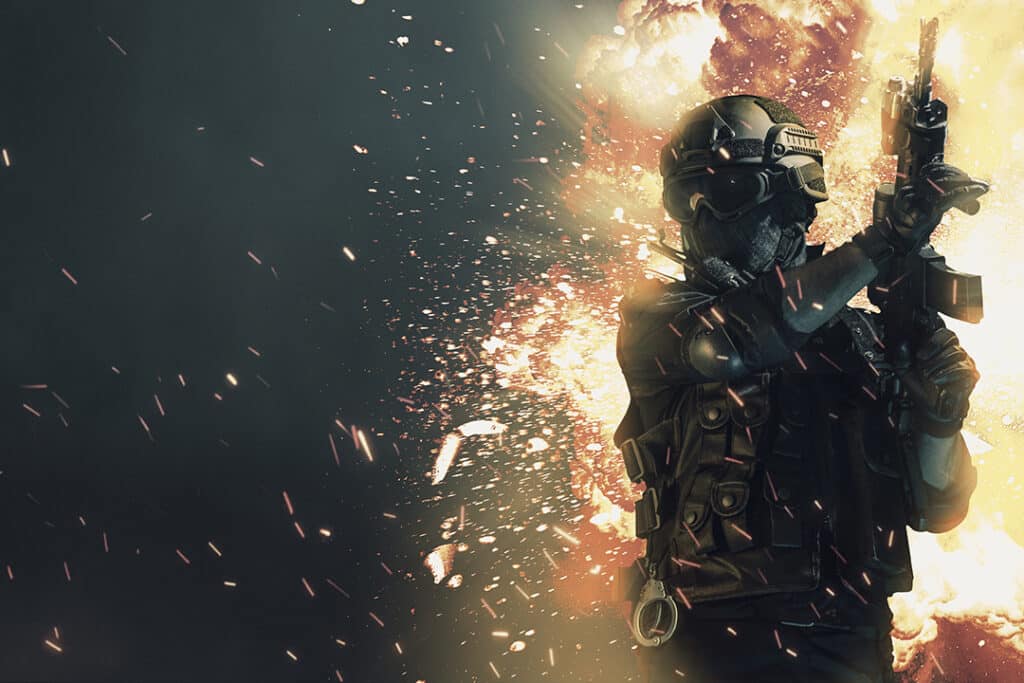
Testing and Validation
Thoroughly test and validate the AI brain in simulated and real-world environments. Conduct extensive scenario-based testing, stress testing, and evaluation of the robot’s performance against predefined metrics. Iterate and refine the AI brain based on the insights gained from testing to enhance its robustness and reliability.
Integration of AI Framework
By implementing a powerful and intelligent AI brain, the tactical superhuman robot gains the ability to analyze complex situations, learn from data, adapt its behavior, and make informed decisions. Integrating AI frameworks, data acquisition, machine learning models, real-time inference, reinforcement learning, continuous learning, ethical considerations, and rigorous testing forms the foundation for the robot’s cognitive capabilities and effectiveness in tactical operations.

Present Day Technologies that could do the previously outlined AI Framework.
- Deep Learning Frameworks
- Neural Network Architectures
- Hardware Acceleration
- Reinforcement Learning Libraries
- Natural Language Processing (NLP) Libraries
These present-day technologies, combined with the expertise of AI researchers and engineers, provide the necessary tools and frameworks for implementing advanced AI functionality in a tactical superhuman robot. However, it’s important to note that ongoing research and advancements in AI will continue to shape the landscape, potentially introducing even more sophisticated technologies.
Integrating Hardware and Software
The seamless integration of hardware and software is paramount to the success of our endeavor. The AI brain will be fused with the robot’s physical components, enabling efficient communication and synchronization. Custom hardware interfaces, wiring, and connectors will facilitate swift data transfer, ensuring the robot’s actions align precisely with its cognitive processes.
Integrating hardware and software components is critical to building a tactical superhuman robot powered by AI. This section will explore the key considerations and steps in integrating the hardware and software to create a cohesive and efficient system.
Hardware Design and Selection

Begin by selecting and designing the hardware components that align with the robot’s requirements. Consider factors such as processing power, memory capacity, connectivity options, power efficiency, and durability. Choose high-quality components from reputable manufacturers to ensure reliability and performance.
System Architecture
Design a robust system architecture that accommodates the hardware and software components. Consider factors such as modularity, scalability, and interoperability. Divide the system into modules, allowing for independent development and easier maintenance. Determine the communication protocols and interfaces that facilitate seamless interaction between different components.
Sensor Integration
Integrate the sensory system into the hardware design. Connect cameras, lidar, radar, and other necessary sensors to capture real-time data from the environment. Ensure proper alignment, calibration, and synchronization of sensor inputs to provide accurate and reliable information to the AI system.
Computing Power

Determine the computing power required to process massive data and execute complex AI algorithms. Select high-performance processors, such as multi-core CPUs or specialized AI chips, to handle the computational demands of real-time perception, decision-making, and control. Consider options like a cloud or distributed computing to offload computational tasks if needed.
Software Development
Develop the software components that enable the robot’s AI capabilities. This includes implementing AI algorithms, perception systems, decision-making modules, control systems, and interfaces for human-robot interaction. Utilize Python, C++, or Java programming languages, and leverage existing AI frameworks and libraries to expedite development.
Firmware and Drivers
Develop firmware and device drivers that enable seamless communication between the hardware components and the software layers. Write firmware code to manage sensors, actuators, and other hardware interfaces. Implement drivers to facilitate efficient data transfer and control between the software and hardware layers.
Testing and Validation
Conduct rigorous testing and validation procedures to ensure hardware and software seamless integration. Perform functional, stress, and scenario-based testing to verify the system’s robustness, reliability, and performance. Use simulation environments and real-world testing scenarios to evaluate the system’s behavior and validate its tactical capabilities.

Iterative Development and Optimization
Adopt an iterative development approach to refine the integration of hardware and software. Continuously evaluate and optimize the system’s performance, identifying and resolving bottlenecks, improving efficiency, and enhancing the overall user experience. Gather feedback from end-users and incorporate necessary improvements to meet their requirements.
The integration process and Present Day Technology
By effectively integrating the hardware and software components, a tactical superhuman robot powered by AI can achieve seamless operation, reliable performance, and advanced capabilities. The integration process encompasses careful design, selection, and implementation of hardware components and the developing of sophisticated software algorithms and interfaces. The integration can be fine-tuned through systematic testing, validation, and iterative development to deliver a powerful and efficient system.
Present Day Technologies that could do the previously outlined integration process.
- System-on-Chip (SoC) Solutions
- Robotics Operating Systems
- Sensor Integration Platforms
- Development Frameworks and Libraries
- Simulation Environments
- Communication Protocols
These present-day technologies provide the foundations for integrating a tactical superhuman robot’s hardware and software aspects. However, it’s important to note that ongoing advancements and emerging technologies may introduce even more sophisticated solutions in the future, further enhancing the integration capabilities of such systems.
Testing and Refinement
A rigorous testing phase will evaluate the robot’s performance, resilience, and adaptability. Flaws will be addressed through iterative refinement, and software algorithms will be optimized and hardware-enhanced. Collaboration with expert testers, military strategists, and tactical professionals will provide invaluable insights for fine-tuning the robot’s capabilities to meet real-world requirements.
The testing and refinement phase is crucial in developing a tactical superhuman robot powered by AI. This phase ensures the robot performs optimally, meets the desired specifications, and operates safely and reliably in various scenarios. This section will explore the key aspects of testing and refining the robot’s capabilities.
Test Plan Development

Begin by developing a comprehensive test plan that outlines the objectives, methodologies, and metrics for evaluating the robot’s performance. Define specific test scenarios that cover a wide range of tactical situations, environmental conditions, and potential threats. Consider both simulated environments and real-world testing grounds to obtain a holistic assessment.
Functional Testing
Conduct functional testing to ensure that each robot component operates as intended. Verify that the hardware and software modules are integrated correctly and all sensors, actuators, and communication interfaces function properly. This testing phase helps identify and rectify any issues related to system integration and compatibility.
Performance Testing
Evaluate the robot’s performance in terms of speed, accuracy, response time, and resource utilization. Measure its ability to process sensory inputs, make real-time decisions, and execute physical actions. Monitor and optimize computational performance, ensuring efficient processing power, memory, and communication bandwidth utilization.
Scenario-Based Testing

Simulate tactical scenarios that the robot is likely to encounter in real-world situations. Test its ability to perceive and understand the environment, identify threats, formulate appropriate strategies, and execute tactical maneuvers. Evaluate the robot’s decision-making, adaptability, and effectiveness in addressing various threats and challenges.
Safety and Reliability Testing
Place a strong emphasis on safety and reliability during testing. Assess the robot’s ability to detect and respond to potential risks or malfunctions. Test fail-safe mechanisms, emergency shutdown procedures, and error-handling capabilities. Validate the robot’s compliance with safety standards and ethical guidelines to ensure it operates responsibly and minimizes risks to humans and its surroundings.
User Testing and Feedback
Involve end-users, such as military personnel or security experts, in the testing process. Gather feedback on the robot’s usability, effectiveness, and compatibility with tactical workflows. Incorporate user insights to refine the robot’s behavior, user interfaces, and interaction modalities. This iterative feedback loop helps optimize the robot’s performance and user experience.
Continuous Improvement
Adopt a mindset of continuous improvement throughout the testing and refinement phase. Leverage data collected during testing to iteratively enhance the robot’s capabilities. Analyze performance metrics, identify areas for improvement, and refine the AI algorithms, hardware configurations, or software modules accordingly. Stay up-to-date with advancements in AI, robotics, and tactical strategies to incorporate the latest technologies and techniques.
Validation and Certification
Pursuing validation and certification processes once the robot meets the desired performance and safety requirements. Depending on the application and industry, seek approval from regulatory bodies, governmental agencies, or relevant authorities. Obtain necessary certifications to ensure compliance with legal and operational standards.

Fine Tuning Performance
By rigorously testing and refining the tactical superhuman robot, we ensure its readiness and effectiveness in real-world tactical scenarios. The testing phase allows us to fine-tune the robot’s performance, enhance its decision-making capabilities, and validate its safety and reliability. We can optimize the robot’s functionality and user experience through continuous improvement and user feedback, ultimately delivering a robust and efficient solution.
Ethical and Safety Considerations
As we venture into uncharted territory, ethical and safety considerations must guide our decisions. Legal consultations, adherence to industry standards, and ethical frameworks will be paramount. Comprehensive safety measures, redundant systems, and thorough risk assessments will ensure the robot operates safely and responsibly, minimizing potential harm to humans and the robot itself.

Building a tactical superhuman robot powered by AI involves technological advancements and careful consideration of ethical and safety concerns. We must address potential risks and ensure responsible use as we design and deploy these advanced machines. This section will
explore key ethical and safety considerations associated with such robots.
Transparency and Accountability
Promote transparency by ensuring that the robot’s decision-making processes are explainable and understandable. Implement AI algorithms and models that can provide insights into the reasoning behind the robot’s actions. Maintain accountability by clearly defining the roles and responsibilities of human operators and the robot itself.
Human-Robot Interaction
Pay close attention to the interaction between humans and the tactical superhuman robot. Develop intuitive and user-friendly interfaces that facilitate seamless communication and collaboration. Design the robot’s behavior and responses to align with human expectations and ethical norms.
Bias and Fairness
Mitigate biases that may emerge from the training data or algorithms used in the robot’s AI system. Strive for fairness in decision-making processes, ensuring that the robot does not discriminate based on attributes such as gender, race, or ethnicity. Regularly audit and evaluate the system to identify and rectify any unintended biases.
Privacy and Data Protection
Respect privacy rights and implement robust data protection measures. Ensure the robot’s sensory data collection and processing adhere to relevant privacy laws and regulations. Anonymize and securely handle sensitive information, and provide data storage, access, and usage transparency.

Robustness and Security
Prioritize the robustness and security of the tactical superhuman robot. Implement measures to protect against cyber threats, unauthorized access, and malicious attacks. Regularly update the robot’s software and firmware to address potential vulnerabilities and ensure the system’s integrity.
Human Override and Fail-Safe Mechanisms
Incorporate human override capabilities to enable human operators to intervene and override the robot’s decisions if necessary. Implement fail-safe mechanisms to ensure the robot can handle unforeseen situations, emergencies, or system failures gracefully. Maintain clear protocols for human control and intervention.
Compliance with Legal and Ethical Frameworks
Ensure that the development and deployment of the robot adhere to relevant legal and ethical frameworks. Consider international conventions, local regulations, and industry standards. Engage with policymakers, ethicists, and legal experts to navigate the complex landscape of AI ethics and regulation.
Continuous Monitoring and Adaptation
Establish mechanisms for continuous monitoring of the robot’s behavior and impact. Regularly assess its compliance with ethical guidelines, safety protocols, and legal requirements. Adapt the robot’s behavior and system configurations based on new insights, evolving regulations, and societal expectations.
Importance of Addressing Ethical and Safety Considerations
By addressing ethical and safety considerations, we can build and deploy tactical superhuman robots powered by AI in a responsible and beneficial manner. It is crucial to ensure transparency, fairness, privacy, and security throughout the robot’s lifecycle. By striving for accountability, robustness, and compliance with legal and ethical frameworks, we can harness the potential of these advanced machines while minimizing risks and maximizing their positive impact.
Present Day Technologies that could do the previously outlined Ethical and Safety Considerations.
- Explainable AI (XAI)
- Privacy-Preserving Technologies
- Cybersecurity Measures
- Human-Robot Collaboration Interfaces
- Compliance and Governance Tools
- Continuous Monitoring and Alert Systems
- Human Override Mechanisms
- Ethical Design Frameworks and Guidelines
These current-day technologies can provide a foundation for implementing ethical and safety considerations in developing a tactical superhuman robot powered by AI. However, it is essential to continuously assess and adopt emerging technologies and evolving best practices to stay at the forefront of ethical and safe AI development and deployment. Regular updates and collaboration with experts in the field are crucial to ensure the responsible and ethical use of these advanced robotic systems.
AI-Powered Tactical Superhuman Robot Capabilities and Limitations

Hypothetically, if we were to build the outlined Tactical Superhuman Robot Powered by AI based on the information discussed, the robot would possess several advanced capabilities while also having certain limitations. Here are some potential capabilities and limitations to consider:
Capabilities:
Enhanced Physical Strength and Agility
The robot’s physical structure and actuation systems would enable it to exhibit superior strength and agility compared to humans. This would allow it to perform physically demanding tasks, navigate challenging terrains, and engage in combat situations effectively.
Advanced Sensory Systems
Equipped with state-of-the-art sensors, the robot would have enhanced perception capabilities, including computer vision, infrared imaging, and audio sensors. This would enable it to detect and track objects, recognize faces, analyze environmental conditions, and gather crucial situational awareness data.
Intelligent Decision-Making
Powered by an AI brain, the robot would possess advanced cognitive capabilities. It would be able to analyze vast amounts of data, make rapid decisions, and adapt its strategies based on changing circumstances. The AI algorithms would enable it to assess threats, identify targets, and determine appropriate response actions.
Tactical and Strategic Planning
The robot would be able to evaluate complex tactical scenarios, assess risks, and develop strategic plans. It would possess knowledge of various combat tactics, mission objectives, and rules of engagement, allowing it to devise optimal strategies for achieving mission success.
Autonomous Operation
The robot would be capable of autonomous operation, reducing the need for constant human intervention. It could execute predefined missions, navigate environments, and interact with objects and interfaces independently. The AI algorithms would enable it to learn from its experiences and continually improve its performance.
Communication and Coordination
The robot would have advanced communication systems, enabling seamless interaction with human operators and other robotic units. It could exchange information, relay data, and coordinate actions with teammates, enhancing overall mission effectiveness and collaboration.
Limitations:
Ethical Decision-Making
Despite advanced AI capabilities, the robot still faces ethical decision-making challenges. While programmed with ethical guidelines, it may struggle with nuanced ethical dilemmas and understanding complex human values, potentially leading to unintended ethical consequences.
Contextual Understanding
Although the robot would have sophisticated perception systems, it might encounter difficulties in fully comprehending complex contextual cues. Understanding sarcasm, non-verbal communication, and subtle social dynamics could be challenging, potentially impacting its ability to interact effectively with humans.
Adaptability to Unforeseen Situations
While the robot’s AI brain would enable it to adapt to some extent, it might encounter difficulties in handling completely novel or unexpected situations. Its decision-making processes may rely heavily on existing data and training, potentially limiting its ability to respond creatively to unprecedented challenges.
Limited Creativity and Intuition
The robot’s AI algorithms would prioritize logical and data-driven decision-making, potentially lacking humans’ intuitive and creative problem-solving capabilities. It may struggle with tasks requiring high creativity, intuition, and improvisation levels.
Vulnerability to Attacks and Malicious Actors
Despite robust security measures, the robot could still be vulnerable to cyber-attacks and manipulation by malicious actors. Safeguards would need to be in place to protect the robot’s systems from unauthorized access and ensure its secure operation in hostile environments.
Dependence on Power and Maintenance
The robot’s functionality would rely on a continuous power supply and regular maintenance. Operating in remote or challenging environments with limited resources may present logistical challenges and impact its operational capabilities.
Disclaimer
It is important to remember that the capabilities and limitations outlined here are speculative and based on hypothetical scenarios. The actual capabilities and limitations of a Tactical Superhuman Robot Powered by AI would depend on the specific technologies, design choices
Scenarios Were The Tactical Superhuman Robot Would Excel

With its advanced capabilities, a Tactical Superhuman Robot Powered by AI could excel in various scenarios requiring precise decision-making, physical strength, and situational awareness. Here are some potential scenarios where the robot could demonstrate its effectiveness:
Combat and Defense
In military operations, the robot could be deployed in combat zones to assist human soldiers. Its enhanced physical strength, agility, and ability to analyze complex tactical situations would make it a valuable asset on the battlefield. It could navigate hazardous terrains, provide cover fire, and engage enemies with superior accuracy and response times.
Search and Rescue Missions
During search and rescue operations in challenging environments, such as collapsed buildings or disaster-stricken areas, the robot could leverage its sensors, including infrared imaging and audio detection, to locate and assess survivors. Its robust physical structure would enable it to traverse unstable debris and assist in extricating trapped individuals.
Hazardous Material Handling
The robot’s ability to operate in dangerous and contaminated environments could be beneficial in handling hazardous materials or addressing chemical, biological, radiological, and nuclear (CBRN) incidents. It could safely perform containment, decontamination, and sample collection without risking human lives.
Security and Surveillance
Deployed in high-security areas or critical infrastructure facilities, the robot could enhance security through constant surveillance, threat detection, and response capabilities. Its advanced sensors and AI algorithms would enable it to identify suspicious activities, track intruders, and coordinate with security personnel in real time.
Reconnaissance and Intelligence Gathering
The robot’s autonomous capabilities and sensor suite would make it well-suited for intelligence-gathering missions. It could conduct covert operations, collect valuable data, and transmit real-time information to human operators, providing critical insights for decision-making and strategic planning.
Hostage Situations and Negotiations
In high-risk scenarios involving hostage situations, the robot could be deployed to assess the environment, gather intelligence, and provide real-time situational updates to tactical teams. Its physical capabilities could also assist in swift and controlled extraction of hostages, minimizing risk to human life.
Border Control and Surveillance
The robot’s ability to operate autonomously and its advanced sensors could benefit border control and surveillance applications. It could monitor border areas, detect unauthorized crossings, and assist in securing national boundaries, augmenting human border patrol efforts.
Yet Another Disclaimer
It is important to note that while the robot may excel in these scenarios, human oversight and intervention may still be necessary, particularly in situations requiring complex judgment calls, ethical considerations, and handling of unforeseen circumstances. Human operators would monitor, direct, and supervise the robot’s actions to ensure mission success and maintain accountability.
Ultimately, the specific scenarios where the Tactical Superhuman Robot Powered by AI would excel would depend on its design, capabilities, and the intended application within the context of existing legal, ethical, and operational frameworks.
Cost and Timeline to Build a Terminator

Building a project of this magnitude involving the creation of a tactical superhuman robot powered by AI entails numerous complexities and variables. However, based on the information discussed thus far, I can provide a rough estimate of the itemized costs and a generalized timeline. These estimates are
speculative and subject to change based on various factors, including the specific requirements, technologies chosen, team capabilities, and unforeseen challenges.
Itemized Cost Estimate:
Research and Development
- Cost: $2,000,000 – $5,000,000
- This includes extensive research, feasibility studies, and concept development to lay the foundation for the project.
Materials and Components
- Cost: $3,000,000 – $6,000,000
- This includes acquiring advanced materials, mechanical components, sensors, actuators, and other hardware required to build the robot’s physical structure.
Software Development
- Cost: $1,000,000 – $3,000,000
- This includes the development of AI algorithms, machine learning models, computer vision systems, and software infrastructure to power the robot’s AI brain and cognitive capabilities.
Integration and Assembly
- Cost: $1,000,000 – $2,500,000
- This includes rigorous testing, evaluation, and quality assurance procedures to ensure the robot’s performance, safety, and adherence to ethical considerations.
Iterative Refinement and Enhancements
- Cost: $1,000,000 – $2,500,000
- This accounts for the iterative refinement of the robot’s functionalities based on testing feedback, user evaluations, and technological advancements.
Ethical and Regulatory Compliance
- Cost: $500,000 – $1,500,000
- This covers the cost of engaging legal experts, ethicists, and regulatory consultants to ensure compliance with ethical guidelines, safety standards, and applicable regulations.
Total Cost Estimate
- Approximate Total Cost: $10,000,000 – $25,000,000
Timeline
- Research and Development: 6-12 months
- Materials and Components Acquisition: 3-6 months
- Software Development: 12-18 months
- Integration and Assembly: 6-12 months
- Testing and Quality Assurance: 6-12 months
- Iterative Refinement and Enhancements: Ongoing process, 12-24 months
- Ethical and Regulatory Compliance: 3-6 months
Remember that this is a rough estimate, and the timeline can be influenced by various factors such as team size, expertise, funding availability, and unforeseen technical challenges. It is essential to have a flexible approach and allow for potential adjustments throughout the project’s lifecycle.
But hey, for 2 years of your time and between 10 and 25 million, you’d have your own personal terminator:) Happy Building
What Aspects of a Terminator Can Technology Not Reach Yet
Building a Terminator-like entity, as portrayed in the “Terminator” film series, involves several elements beyond our technological reach. Here are some key aspects:
- Artificial General Intelligence (AGI): Terminators possess a high level of artificial intelligence, including advanced cognitive capabilities, learning, and decision-making. Developing a truly autonomous, self-aware, and human-level AGI that can navigate complex real-world scenarios remains a significant challenge.
- Humanoid Robotics: Terminators are robots designed to mimic human form and movement. While we have made advancements in humanoid robotics, creating robots that perfectly replicate human capabilities, such as dexterity, balance, and natural locomotion, is still an ongoing area of research.
- Tissue and Muscle Replication: Terminators in the movies possess living tissue and muscles over their endoskeletons, allowing them to blend seamlessly with humans. Replicating such complex biological structures with the necessary functionality and integration into robotic systems is beyond our capabilities.
- Time Travel: In the “Terminator” franchise, time travel plays a significant role. However, time travel is purely speculative and has no scientific basis or feasibility in our current physics understanding.
- Energy and Power Systems: The Terminators require advanced power systems to sustain their operations and combat capabilities. Developing power sources with sufficient energy density, longevity, and the ability to sustain high-performance functions for extended periods is a significant challenge.
- Cybernetic Systems and Weapons: Terminators possess advanced cybernetic systems and weaponry, including laser guns and sophisticated targeting systems. Creating such advanced cybernetic components and weapons with high reliability, efficiency, and destructive capabilities beyond our current technological capabilities.
Just When You Thought It Was The Last Disclaimer
The stuff that has to be said: It’s important to note that the “Terminator” franchise is a work of science fiction and should be viewed as entertainment rather than an accurate representation of what is currently possible in robotics and AI. While we continue to make significant advancements in these fields, creating fully autonomous and human-like combat machines, as depicted in the movies, remains firmly in fiction”ish”.
How To Build a Terminator Conclusion
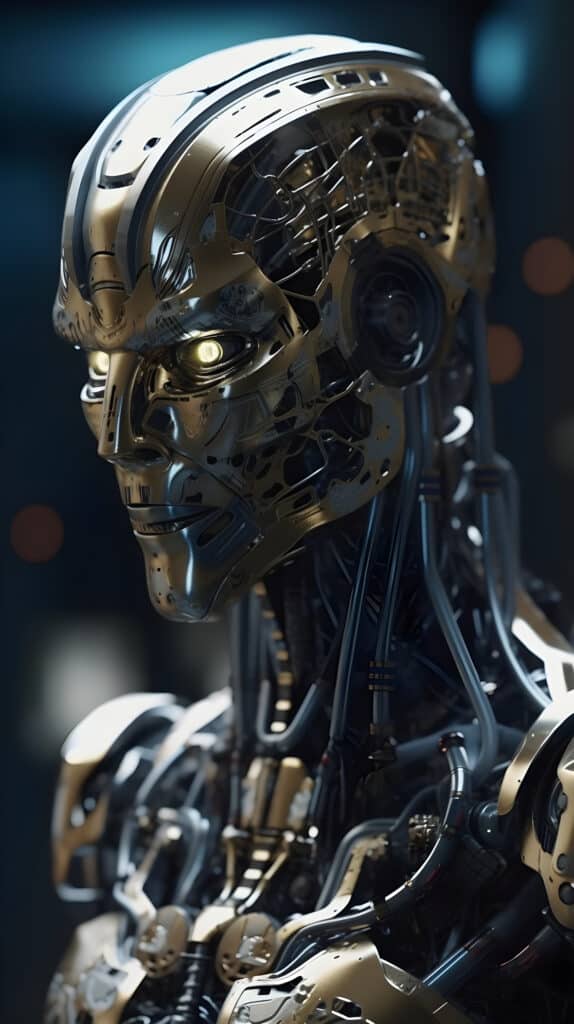
In the grand tapestry of technological progress, the emergence of a lifelike superhuman robot with an AI brain focused on tactical applications would represent a remarkable milestone. This blog post aimed to illustrate the immense potential of artificial intelligence by outlining the intricate steps and considerations involved in constructing such a marvel. While AI played a significant role in generating the majority of this blog post, it is important to emphasize that the content was largely generated by AI, except for grammar and spellcheck, as well as occasional editorial notes by the author. This collaborative effort showcases the growing capabilities of AI technology and its potential to assist in generating insightful and informative content.
As we reflect on the possibilities of a lifelike superhuman robot with an AI brain focused on tactical applications, we recognize the profound impact it could have on various domains, including defense, law
enforcement, and personal security. While realizing such a creation remains a complex and ambitious goal, it fuels our curiosity and inspires further exploration.
More to Think About Regarding Robotics and AI
The journey toward building a tactical superhuman robot is a testament to human ingenuity, pushing the boundaries of science and technology. Combining robotics, materials science, and artificial intelligence advancements, we inch closer to a future where AI-powered entities can augment our abilities and safeguard our lives. “Interestingly, this paragraph and most of this post were written by AI.”
Let us continue to embrace the potential of AI, exploring its possibilities while remaining cognizant of ethical implications and safety considerations. As we navigate this evolving landscape, we find ourselves on the precipice of a new era, where lifelike superhuman robots may one day walk among us, guarding our safety and transforming how we perceive human-machine interactions.
In conclusion, the journey to construct a lifelike superhuman robot with an AI brain focused on tactical applications is a complex and awe-inspiring endeavor. While this blog post serves as a glimpse into this captivating domain, it highlights AI’s intelligence and collaborative power, demonstrating its potential to generate insightful and thought-provoking content. As we look ahead, let us remain captivated by the possibilities and continue pushing the boundaries of what is possible in AI and robotics.
AS ALWAYS, COMMENTS ARE VERY WELCOME
How to Build a Terminator FAQs
While we don’t have Terminators, advancements in robotics and artificial intelligence have led to the development of various autonomous systems, drones, and advanced military technologies. However, these technologies are far from possessing the level of intelligence, physical capabilities, and autonomy portrayed by the Terminators.
The development of artificial intelligence raises important ethical and safety concerns. As AI systems become more sophisticated, ensuring they are designed and deployed responsibly is crucial, with adequate safeguards in place. Ethical considerations and guidelines play a crucial role in governing the development and deployment of AI technologies.
The concept of a self-aware AI system akin to Skynet, the fictional AI network in the “Terminator” series, remains speculative. While AI can exhibit impressive learning and decision-making capabilities, achieving true consciousness and self-awareness in machines is beyond our scientific understanding.
Governments and organizations worldwide actively discuss and implement regulations and guidelines for developing and deploying AI technologies. These efforts aim to balance promoting innovation and ensuring AI’s responsible and ethical use.
Like any other technology, AI has the potential for positive and negative impacts. If not properly designed, implemented, or controlled, AI systems could have unintended consequences or be misused. It is essential to consider ethical considerations, safety precautions, and robust governance frameworks when developing AI technologies.
It is not necessary to fear AI technology itself. However, it is crucial to approach its development and deployment with caution and responsible practices. By understanding its capabilities, promoting transparency, and ensuring proper oversight, we can harness the potential of AI while mitigating associated risks.



